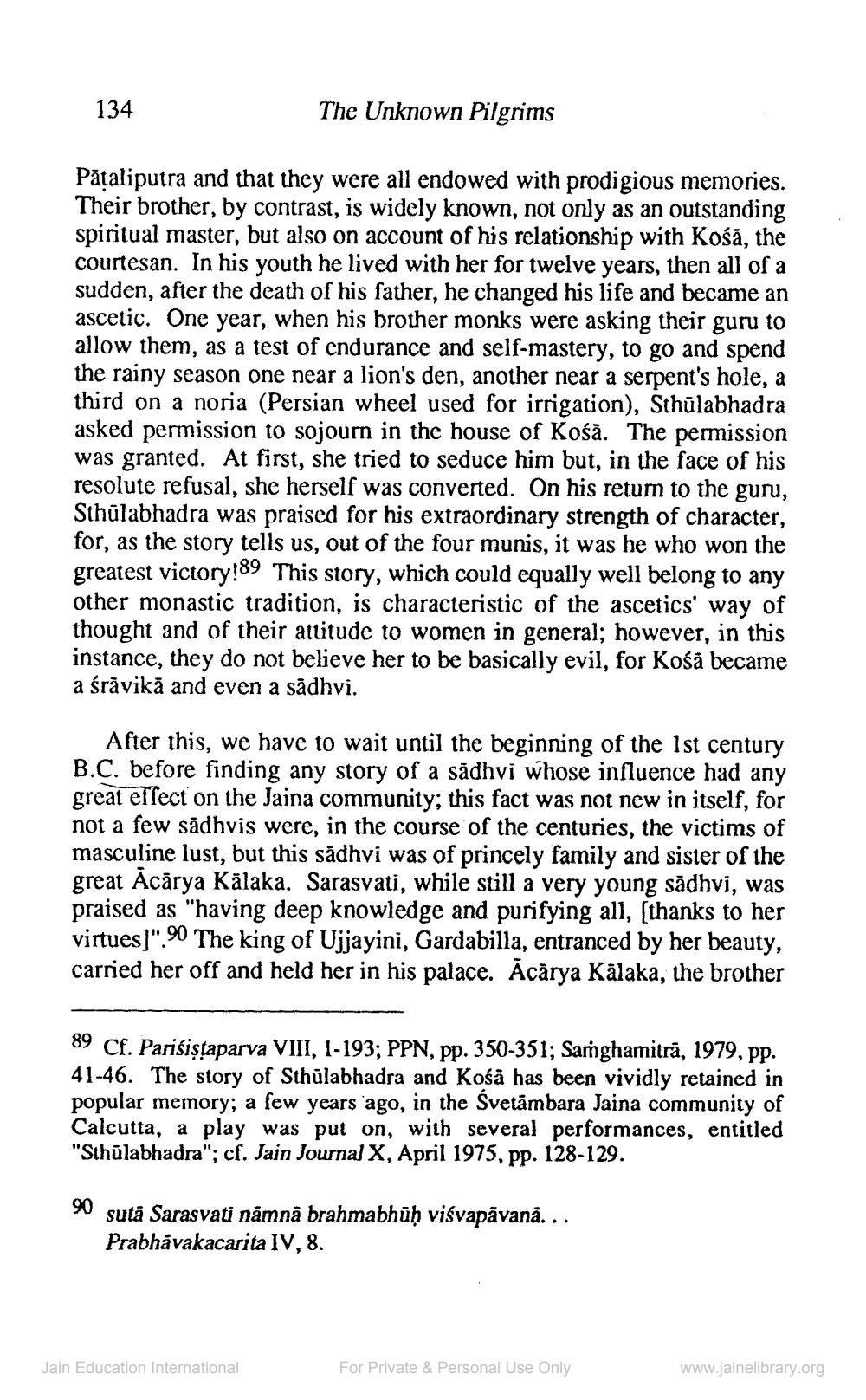________________
134
The Unknown Pilgrims
Pataliputra and that they were all endowed with prodigious memories. Their brother, by contrast, is widely known, not only as an outstanding spiritual master, but also on account of his relationship with Kośā, the courtesan. In his youth he lived with her for twelve years, then all of a sudden, after the death of his father, he changed his life and became an ascetic. One year, when his brother monks were asking their guru to allow them, as a test of endurance and self-mastery, to go and spend the rainy season one near a lion's den, another near a serpent's hole, a third on a noria (Persian wheel used for irrigation), Sthūlabhadra asked permission to sojourn in the house of Kośă. The permission was granted. At first, she tried to seduce him but, in the face of his resolute refusal, she herself was converted. On his return to the guru, Sthūlabhadra was praised for his extraordinary strength of character, for, as the story tells us, out of the four munis, it was he who won the greatest victory!89 This story, which could equally well belong to any other monastic tradition, is characteristic of the ascetics' way of thought and of their attitude to women in general; however, in this instance, they do not believe her to be basically evil, for Kośå became a śrāvikā and even a sādhvi.
After this, we have to wait until the beginning of the 1st century B.C. before finding any story of a sādhvi whose influence had any great effect on the Jaina community; this fact was not new in itself, for not a few sādhvis were, in the course of the centuries, the victims of masculine lust, but this sadhvi was of princely family and sister of the great Ācārya Kālaka. Sarasvati, while still a very young sădhvi, was praised as "having deep knowledge and purifying all, (thanks to her virtues)". 90 The king of Ujjayini, Gardabilla, entranced by her beauty, carried her off and held her in his palace. Ācārya Kālaka, the brother
89 Cf. Parisistaparva VIII, 1-193; PPN, pp. 350-351; Samghamitrā, 1979, pp. 41-46. The story of Sthulabhadra and Kośà has been vividly retained in popular memory; a few years ago, in the Svetāmbara Jaina community of Calcutta, a play was put on, with several performances, entitled "Sthūlabhadra"; cf. Jain Journal X, April 1975, pp. 128-129.
90 suta Sarasvati nämnā brahmabhūḥ viśvapāvanā. ..
Prabhāvakacarita IV, 8.
Jain Education International
For Private & Personal Use Only
www.jainelibrary.org




